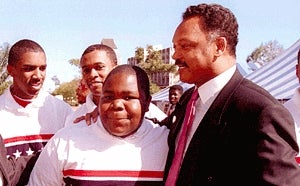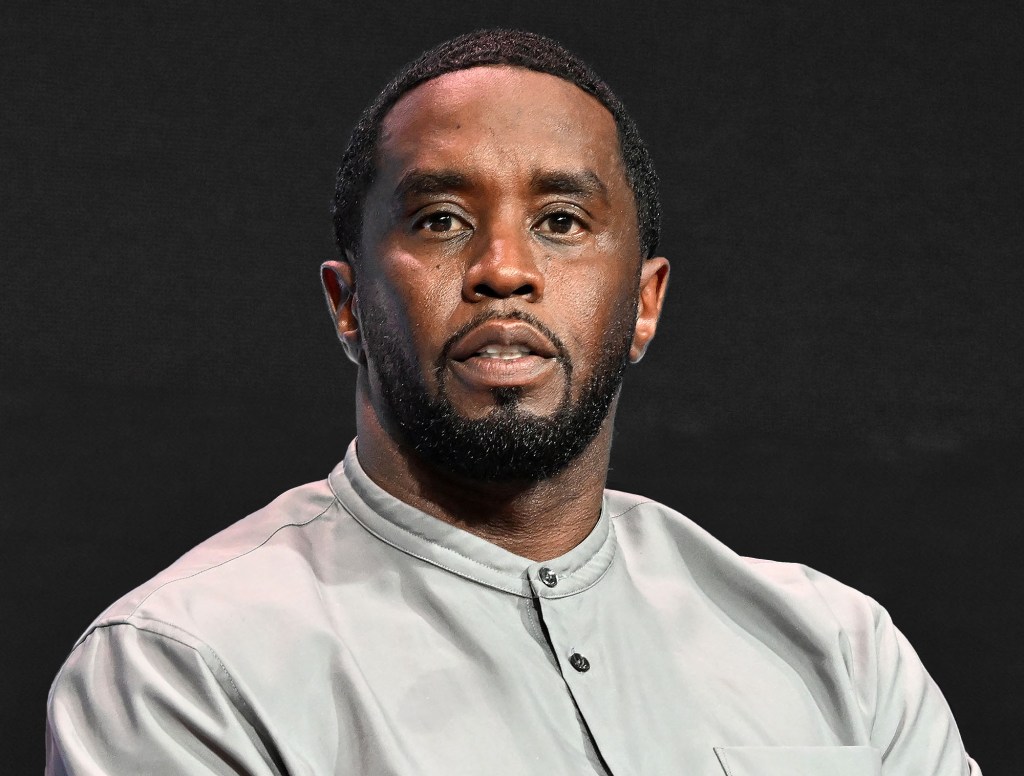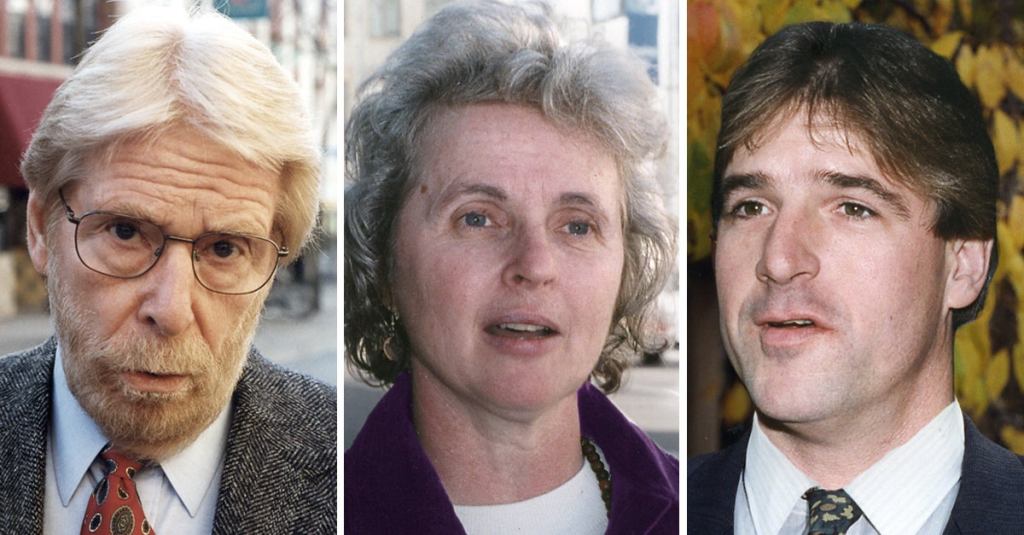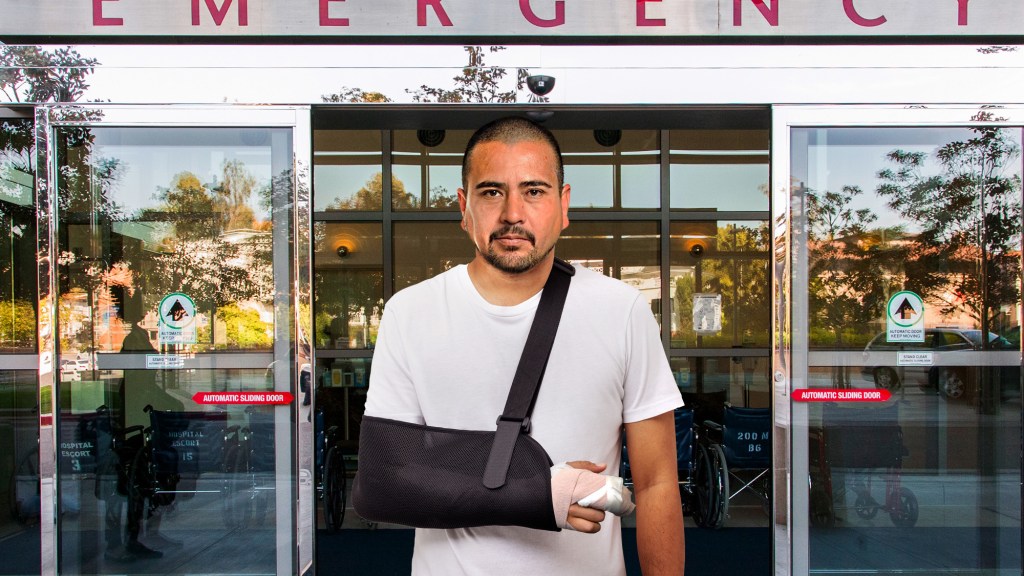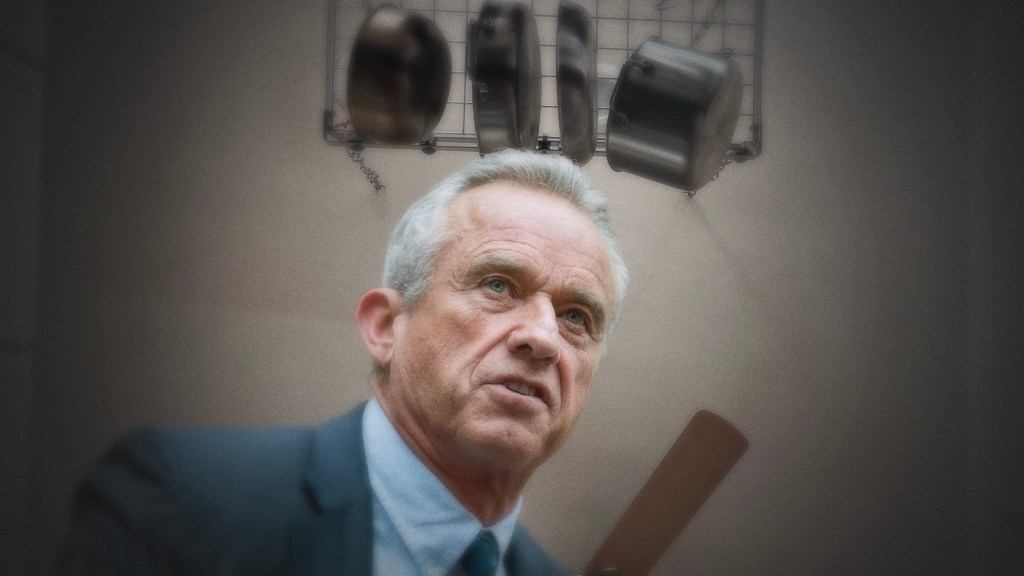NEW YORK–The National Urban League presented Rev. Jesse Jackson with a special lifetime-achievement award Tuesday, lauding him for his “unwavering commitment to creating photo opportunities for disadvantaged inner-city youths.”
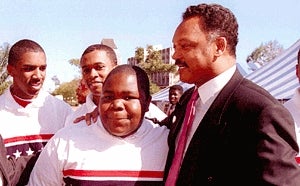
“For more than 30 years, Jesse Jackson has worked tirelessly to give at-risk young people the chance to stand next to him in photos that appear in major newspapers and magazines,” National Urban League director Clarence Booker said. “Thanks to his efforts, thousands of inner-city youths, from Red Hook to Compton, can proudly stand up and say, ’I am somebody who has appeared in a picture with Jesse Jackson.’”
Jackson, the guest of honor at the $600-a-plate banquet at the Waldorf Astoria, was also praised for building “a grass-roots awareness of his face.”
Accepting the award, Jackson urged banquet attendees to keep in mind that, even as the gala event was taking place, thousands of underprivileged urban youths across America were not receiving the vital Jesse Jackson photo opportunities they need.
“It is a crime that in this, the richest nation on Earth, a nation with more than enough high-quality Kodak ASA 400 color-print film for everyone, there are children living without any hope of getting their picture in The Chicago Tribune, much less in Newsweek or having it picked up by Reuters or AP,” said the 57-year-old Jackson, president and founder of the Rainbow/PUSH Coalition. “We must expose the disgrace that is urban poverty in no fewer than 36 exposures.”
Jackson went on to assail the news media for its loss of focus in recent years.
“The focusing controls for most major cameras are right on the end of the lens,” Jackson said. “If I am standing four feet from the camera, the dial should be set to four. We must be diligent in our efforts to raise media awareness of the importance of this focus dial. Wake up, America. Wake up.”
Last week, Jackson brought much-needed photographic exposure to the inner-city youths of New Orleans, posing for cameras with a number of them in front of the city’s blighted McCann-Breaux projects.
“New Orleans’ terrible urban decay,” Jackson said, “provided an ideal backdrop for this important photograph. The rich red bricks of the abandoned buildings, adorned with colorful gang graffiti, nicely contrasted the bright blue sky and really helped draw the eye in.”
In addition to helping to raise Jackson-awareness, the New Orleans visit created seven badly needed jobs for New Orleans Times-Picayune photographers.
“If not for Mr. Jackson,” photographer Jerry Doumanian said, “I might not have had an assignment today.”
According to Jackson publicist Dwayne Morton, the reverend is the best hope for publicity in the dilapidated urban centers of America.
“Last March, Jesse Jackson stood smiling in front of the East St. Louis housing projects in near-freezing weather during the ’Positive Image’ campaign,” Morton said. “In June, he stood with his arm around former President Jimmy Carter at the site of a proposed community center in Atlanta. Last month, he slaved under the hot flash bulbs at the Harbor-UCLA Medical Center, standing at the bedsides of victims of gang-related shootings. And every week, he bravely faces CNN cameras to host his Both Sides With Jesse Jackson program.”
Next week, Jackson is staging a “March For Photos Of Color” down D.C.’s Pennsylvania Avenue. Jackson spokespersons said the goal of the march is to “mobilize hard-working photographers to stand up against black-and-white, inside-page pictures of Jackson and take front-page-quality pictures that celebrate all the colors of the rainbow.”
“We must continue the struggle my publicist started three decades ago and never settle for page 28,” Jackson said. “We must keep hope for the front cover–ideally, above the fold–alive.”


